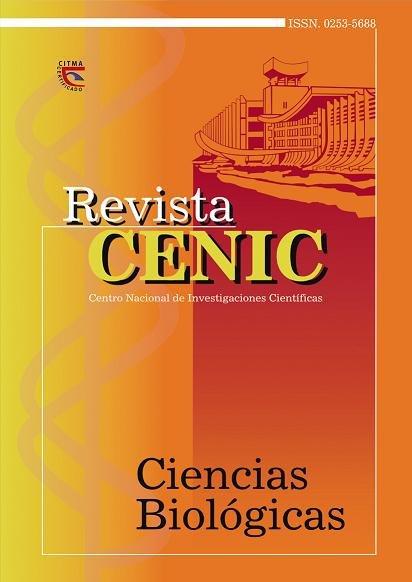Estación de trabajo para el estudio de la cinética de crecimiento de Escherichia coli mediante el método de turbidez
Abstract
This work discusses the design of a workstation for studying the of Escherichia coli growth kinetic by turbidity
method. The system has a visual interface based on the use of Virtual Instrumentation using LabVIEW utility in
its 8,5 version in order to allow the study and the temporary characterization of bacterial growth. As stimulation signal
emitting device, it was used a red LED (light-emitting diode) with a wavelength equal to 626 nm. The BPW77N phototransistor
was used in the reception stage. This device allows to measure the level of absorbance of the current sample. The
Diramic-10 card (Diramic 10 system component) was integrated to the workstation for signal conditioning. Furthermore,
it were utilized elements such as the analogical digital and digital analogical converters of the PCI-6014 commercial card
connected to computer. It was obtained a workstation with a visual interface able to plot the microbial growth kinetics
and export this data to an Excel file for its storage and its further analysis. The growth curves from Escherichia coli ATCC
25923 were obtained from incubation for different concentrations were obtained during 17 h at 37 °C. Furthermore, through
the graphical representation, the kinetics of the mentioned bacteria in culture medium (Muller-Hilton broth) was checked
and the various stoges that it differentiated the various stages that comprise it.
Downloads

Downloads
Published
How to Cite
Issue
Section
License

This work is licensed under a Creative Commons Attribution-NonCommercial-ShareAlike 4.0 International License.
Los autores que publican en esta revista están de acuerdo con los siguientes términos:
Los autores conservan los derechos de autor y garantizan a la revista el derecho de ser la primera publicación del trabajo al igual que licenciado bajo una Creative Commons Atribución-NoComercial-CompartirIgual 4.0 Internacional que permite a otros compartir el trabajo con un reconocimiento de la autoría del trabajo y la publicación inicial en esta revista.
Los autores pueden establecer por separado acuerdos adicionales para la distribución no exclusiva de la versión de la obra publicada en la revista (por ejemplo, situarlo en un repositorio institucional o publicarlo en un libro), con un reconocimiento de su publicación inicial en esta revista.
Se permite y se anima a los autores a difundir sus trabajos electrónicamente (por ejemplo, en repositorios institucionales o en su propio sitio web) antes y durante el proceso de envío, ya que puede dar lugar a intercambios productivos, así como a una citación más temprana y mayor de los trabajos publicados (Véase The Effect of Open Access) (en inglés).














